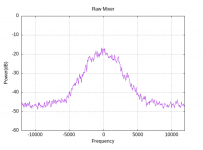Is there any documentation out there which defines each of the parameters located in the json files for Boatbod version of the multi_rx.py program?
I have looked at the p25_rtl_example.json and some of the values make sense and others are undecipherable.
I am looking for a listing of all the parameters with an explanation and if there are only certain valid values, then what are those values (like demod_type is either cqpsk or fsk4 or fsk)
Thanks
I have looked at the p25_rtl_example.json and some of the values make sense and others are undecipherable.
I am looking for a listing of all the parameters with an explanation and if there are only certain valid values, then what are those values (like demod_type is either cqpsk or fsk4 or fsk)
Thanks


